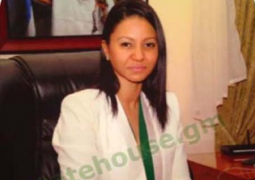Dr. Babagana Ahmadu, FAO’s country representative is of the conviction that the newly launched project, NEMA project has come to join the bandwagon of a crusade, geared towards achieving food security.
According to him, regional poverty difference is a major concern but more so the growing inequalities as a 2010 Integrated Household Survey (HIS) shows that top 10 percentage of the population consumes 7.8 times, as much as those in the lowest 10 percentage.
He made this remark at the official launch of the National Agricultural Land and Water Management Development Project (NEMA), at the Kairaba Beach Hotel.
The NEMA project is a grant of SDR13, 150,000 (over 18 million dollars), approved by IFAD, board in December 2012, aimed at reducing poverty among rural women and youths.
The project, which is meant to design and build on the strengths and weaknesses of earlier IFAD and other donor supported projects in the agricultural sector, forms critical part of IFADs efforts within UNDAF.
“It will be of interest at this point to state that results of the Gambia 2010 IHS shows that 48.4 percent of the population are living below the poverty line of US$1.25 per day and when UN$1.00 per day is used, 36.7 percent are poor,” Dr. Ahmadu said.
He said the HIS analysis has shown that only Banjul and Kanifing areas, urban settlements have poverty rates lower than the national average. Kuntaur and Janjanbureh, like the 2003 IHS, have the highest poverty rates with 79 and 73.2 percent, respectively.
According to him, about a fifth of mankind (1.4 billion people) still lives in abject poverty despite the numerous national and global efforts during the past years.
Commenting on the first target of the MDGs, which aimed to decrease extreme poverty by one-half by the year 2015, he said, “As of 2011, the poorest 40 percent of the world’s population accounts for 5 percent of the global income and the richest 20 percent accounts for three-quarters of world income.”
“Poverty remains a predominantly rural problem as the majority of the world’s poor are located in the rural areas. It is estimated that 76 percent of the developing world’s poor live in rural areas, well above the overall population share living in rural areas, which is only 58 percent,” he disclosed.
He said disparities between rural and urban areas are on the rise, particularly in many developing and transitional countries. Globally, rural people and rural places tend to be disadvantaged relative to their urban counterparts and poverty rates increase as rural areas become more remote.
“Individuals living in rural areas tend to have less to social services, exacerbating the effects of rural poverty,” he stressed.
While stating that the need to reduce poverty and food insecurity is key component of PAGE and UNDAF, he said, the project is also central to the United Nations Development Assistance Framework (UNDAF) pillar one, poverty reduction and social protection as IFAD’s contribution.
“The relevance of this workshop cannot be over-emphasised since poor understanding of project documents by key implementation stakeholders is one of the main factors contributing to poor implementation performance of projects,” he stated.


